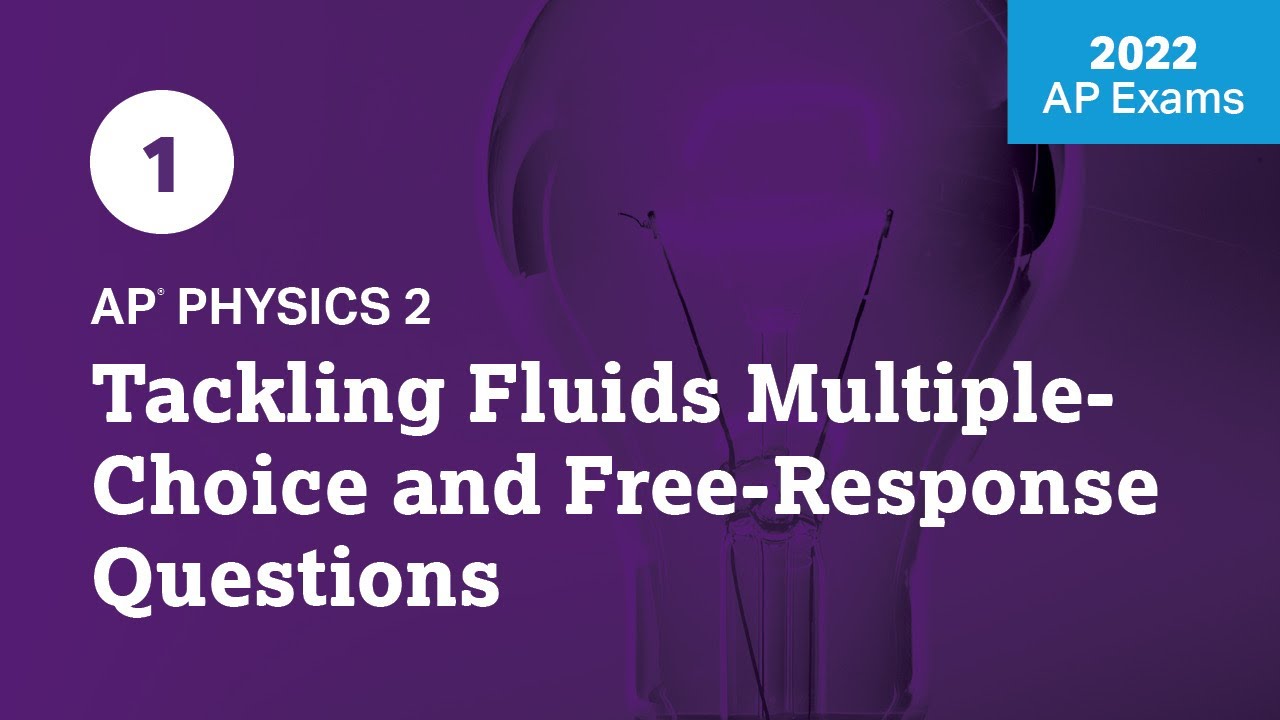Fluids at Rest: Crash Course Physics #14
TLDRThis Crash Course Physics video provides an introduction to fluids. It covers key concepts like density, pressure, Pascal's Principle, manometers, barometers, and Archimedes' Principle. The script explains how density and pressure work in fluids, how pressure changes with depth, and how Pascal's Principle allows hydraulics to multiply force. It discusses how manometers and barometers measure pressure, and tells the story of Archimedes discovering displacement and buoyant force. The video aims to teach fundamentals of physics related to fluids in an engaging format.
Takeaways
- 😀 Fluids are fascinating - they can be liquids or gases that flow, like water, air or corn syrup
- 🧪 Key fluid properties are density and pressure (force/area)
- 💧 Fluid pressure increases with depth due to more weight pressing down
- 📏 Pressure calculation: density x g x depth
- 😮 Pascal's Principle: applying pressure to a confined fluid increases the pressure everywhere in it
- 🚿 Hydraulics utilize Pascal's Principle to multiply force
- 📈 Manometers measure pressure using fluid height differences
- 🎈 Archimedes' Principle: buoyant force on an object equals the weight of fluid it displaces
- 👍 Denser objects sink, less dense objects float
- 🌊 Understanding fluids allows designing things like sensors, pumps and planes
Q & A
What is density and how is it calculated?
-Density is mass divided by volume, measured in kilograms per cubic meter. It indicates how heavy the atoms or molecules of a fluid are and how closely they are packed together.
What causes the pressure at the bottom of a pool to be greater than at the surface?
-The deeper you go in a pool of fluid, the more fluid there is above you pressing down, so there is greater pressure at the bottom caused by the weight of the fluid above.
What is Pascal's Principle?
-Pascal's Principle states that if you apply pressure to a confined fluid, the pressure in every part of that fluid increases by the same amount.
How do hydraulics allow a small input force to produce a large output force?
-Hydraulics take advantage of Pascal's Principle and differences in area. If you put pressure on one piston that gets transferred through the fluid to a second, larger piston, you get a bigger force out.
What is the purpose of a manometer?
-A manometer measures pressure differences using a U-shaped tube filled with fluid. The height difference in the fluid indicates the pressure difference.
How does a barometer measure atmospheric pressure?
-An inverted tube filled with mercury will rise to a level that balances the atmospheric pressure. The height of the mercury indicates the pressure.
What is Archimedes' Principle?
-Archimedes' Principle states that the buoyant force on an object submerged in fluid is equal to the weight of the fluid it displaces.
Why do some things float in water while others sink?
-If the downward force of gravity on an object is less than the upward buoyant force, it will float. If gravity overcomes buoyancy, it will sink.
What factors determine if an object will float or sink?
-The relative densities of the object and fluid determine if it will float or sink. Also the shape, as a less dense object may sink if it displaces little fluid.
How are manometers and barometers used today?
-Modern pressure sensors have mostly replaced traditional manometers and barometers, but the principles discovered through their use still enable designing of systems involving fluid pressure.
Outlines
📺 Introducing Fluids and Pressure
The first paragraph introduces some key concepts related to fluids: density, pressure, Pascal's principle, hydraulics, manometers, and barometers. It discusses how an understanding of fluid properties allows engineers to design useful systems and technology.
📏 Calculating Pressure and Using Manometers
The second paragraph explains how to calculate fluid pressure at different depths. It covers how manometers and barometers are used to measure pressure, including the difference between gauge pressure and absolute pressure.
Mindmap
Keywords
💡density
💡pressure
💡Pascal's principle
💡hydraulics
💡manometer
💡barometer
💡Archimedes' principle
💡static equilibrium
💡gauge pressure
💡hydraulics
Highlights
Fluids apply pressure in EVERY direction.
The deeper you go underwater, the more fluid pressure increases due to the weight pressing down.
Pascal's Principle: Applying pressure to a confined fluid increases the pressure throughout the fluid.
Hydraulic systems use differences in piston area to amplify input force.
Manometers measure pressure differences using height changes in a U-shaped fluid tube.
Barometers measure atmospheric pressure based on the height of mercury in a vertical tube.
Archimedes realized an object's volume equals the volume of fluid it displaces.
Denser objects sink and less dense objects float based on relative buoyant forces.
The buoyant force equals the weight of fluid displaced by an object.
Floating objects displace a volume of fluid equal to their own weight.
Fluid properties like density and pressure are key for designs like sensors and pumps.
Pressure changes linearly with depth based on the fluid's density.
Hydraulics use pressure transmission to create mechanical advantage.
Manometers measure pressure differences, barometers measure absolute pressure.
Archimedes' principle explains why objects float or sink.
Transcripts
Browse More Related Video
5.0 / 5 (0 votes)
Thanks for rating:





